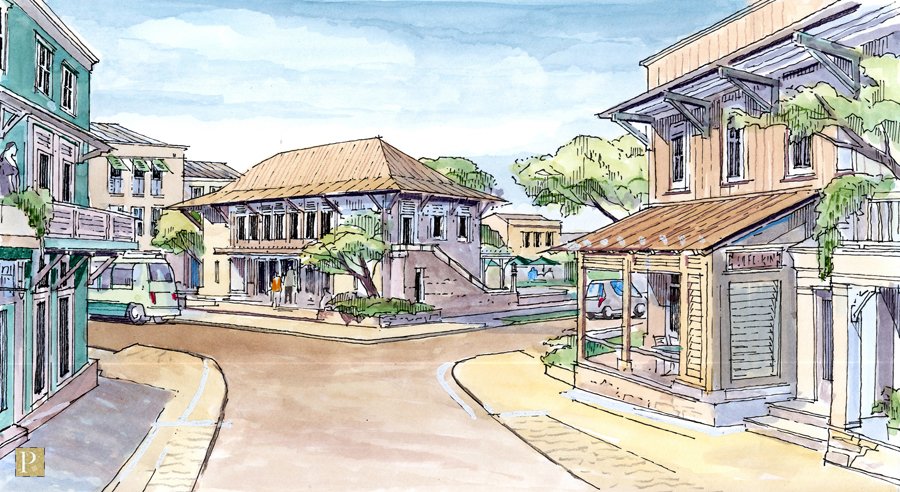A Placemaking Journal
Kona, Hawai’i | Honokohau Village
Honokohau Village offers up a whole new way of planning for the County of Hawai’i Planning Department, the focus of which is an 80-acre TOD in Kona that includes the new West Hawai’i Civic Center. But the broader aim is educational.

As County Planning Director Bobby Jean Leithead Todd explains, this is the first major project to be planned under the award-winning Kona Community Development Plan (CDP), enacted into law in September of 2008. During the October 2009 multi-day public “charrette,” residents and community leaders, developers and builders, and County officials and staff saw how new guidelines apply to a real project in a real place.
This Transit-Oriented Development approach is encouraged under the new Kona CDP. The transit orientation comes into play when development can be designed to make the most of not only personal automobile travel, but also biking, walking, and transit. A TOD, in fact, maximizes the advantages of mobility choices so that people representing a wide range of ages, abilities, and incomes can share the advantages of living, working, and playing in a compact, walkable community.
The Kona CDP provides much more than guidance for TODs, of course. It prescribes goals for putting Kona-appropriate development in the right places, in the right scale for those places, and in the right relationships to surroundings. PlaceMakers used the Kona charrette to customize the Village Design Guidelines, a form-based and Transect-based code, along with providing urban design, charrette facilitation, and community engagement for this TOD.
“So we’re not just talking about planning for transit, walking, biking, and cars,” says Deputy Planning Director Margaret Masunaga. “We’ll also use the charrette to set standards for Honokohau Village that will include building setbacks and heights, the width of streets and sidewalks, the mix of building types, allowable density ranges, and the placement of public parks and other open space. The result will be a village design that encourages a true neighborhood atmosphere.”
Conventional planning approaches often complicate community-building goals. “In the not so distant past,” says Masunaga, “we planned subdivisions that were disconnected from one another and where people without access to automobiles were isolated. The disconnections affected all sorts of other things, including infrastructure investment, environmental protection, and public services like police and fire fighting. “
“One of my dreams,” Masunaga says, “is that my seven-year-old daughter will be able to safely walk just about anywhere she needs to go for her daily needs. That’s not possible in most places in Kona now.
In addition to the physical charrette that characterized the process, those unable to attend had equal access to review and comment on ideas and proposals via the PlaceMakers interactive iCharrette (honokohauvillage.com), which expanded participation opportunities to anyone with any level of interest or concern.


















